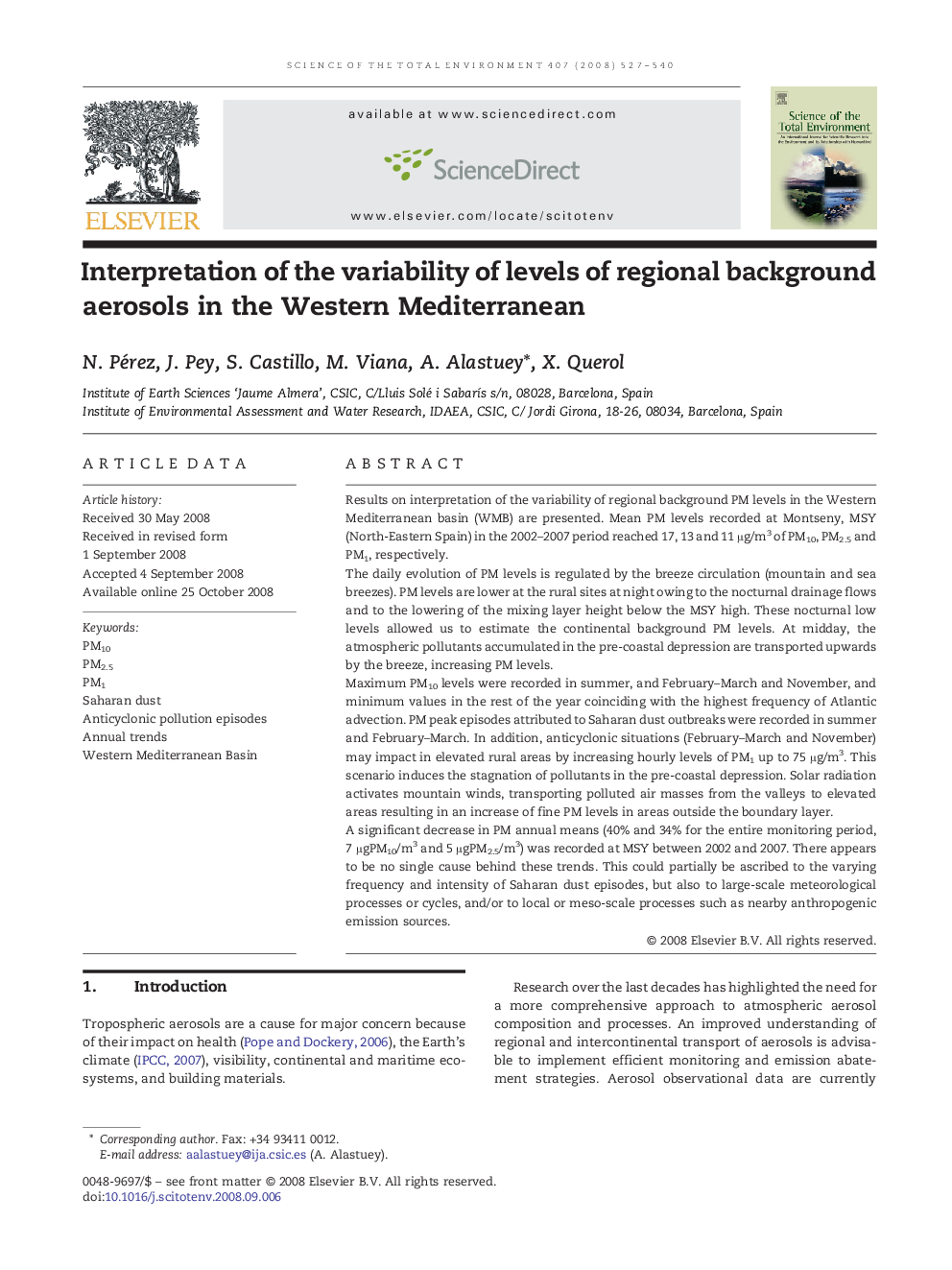| کد مقاله | کد نشریه | سال انتشار | مقاله انگلیسی | نسخه تمام متن |
|---|---|---|---|---|
| 4432507 | 1619909 | 2008 | 14 صفحه PDF | دانلود رایگان |

Results on interpretation of the variability of regional background PM levels in the Western Mediterranean basin (WMB) are presented. Mean PM levels recorded at Montseny, MSY (North-Eastern Spain) in the 2002–2007 period reached 17, 13 and 11 µg/m3 of PM10, PM2.5 and PM1, respectively.The daily evolution of PM levels is regulated by the breeze circulation (mountain and sea breezes). PM levels are lower at the rural sites at night owing to the nocturnal drainage flows and to the lowering of the mixing layer height below the MSY high. These nocturnal low levels allowed us to estimate the continental background PM levels. At midday, the atmospheric pollutants accumulated in the pre-coastal depression are transported upwards by the breeze, increasing PM levels.Maximum PM10 levels were recorded in summer, and February–March and November, and minimum values in the rest of the year coinciding with the highest frequency of Atlantic advection. PM peak episodes attributed to Saharan dust outbreaks were recorded in summer and February–March. In addition, anticyclonic situations (February–March and November) may impact in elevated rural areas by increasing hourly levels of PM1 up to 75 µg/m3. This scenario induces the stagnation of pollutants in the pre-coastal depression. Solar radiation activates mountain winds, transporting polluted air masses from the valleys to elevated areas resulting in an increase of fine PM levels in areas outside the boundary layer.A significant decrease in PM annual means (40% and 34% for the entire monitoring period, 7 µgPM10/m3 and 5 µgPM2.5/m3) was recorded at MSY between 2002 and 2007. There appears to be no single cause behind these trends. This could partially be ascribed to the varying frequency and intensity of Saharan dust episodes, but also to large-scale meteorological processes or cycles, and/or to local or meso-scale processes such as nearby anthropogenic emission sources.
Journal: Science of The Total Environment - Volume 407, Issue 1, 15 December 2008, Pages 527–540